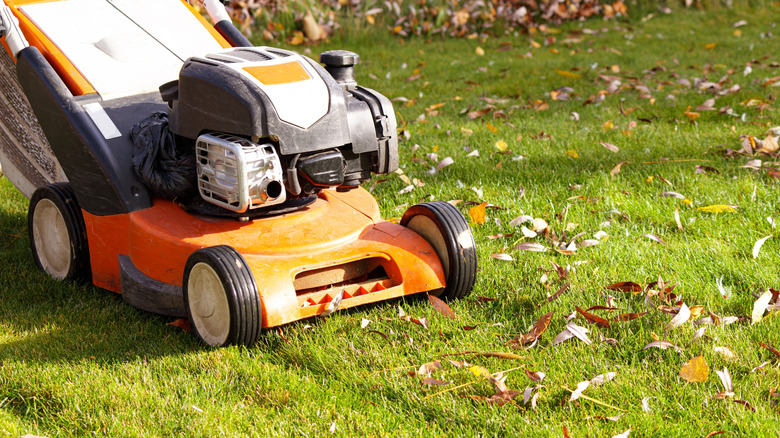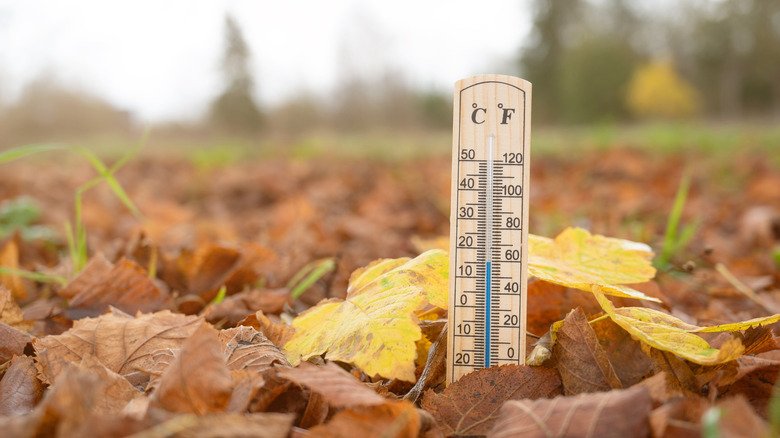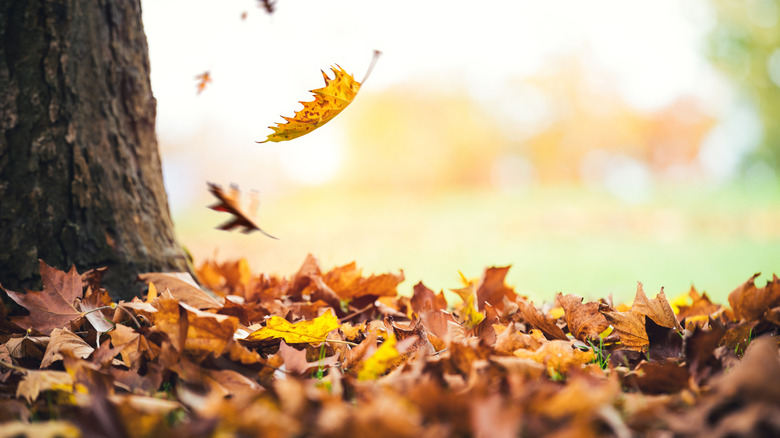The Best Time Of Year To Stop Mowing Your Lawn
Mowing your lawn regularly doesn't just keep it looking neat and trim. It also plays a vital role in your lawn's overall health by ensuring it gets the nutrients it needs and keeping weeds and pests at bay. However, while it may seem like a pretty straightforward maintenance task, it's easy to make mistakes when mowing the lawn. Your grass doesn't require cutting year-round, and for some homeowners, figuring out when to put the lawn mower away for the year is tricky. The best time of year to stop mowing depends on the temperature in your area and the type of grass you have, but in most cases, October to November is the sweet spot.
You should stop mowing your lawn when it's no longer actively growing. Grass growth is usually triggered by warm weather, so when temperatures begin to drop, its growth starts to slow. Instead of directing energy toward blade development, the focus shifts to the grass's crowns and roots below the soil, preparing for dormancy in winter. That's why it's important to consider the average temperature rather than a specific date on the calendar when determining if you can stop mowing for the year.
Stop mowing in the fall before the first frost
Caring for your lawn in fall ensures that you'll have healthy, green grass come spring — but fortunately, you can cross mowing off your list of fall lawn care chores. Grass typically stops growing when temperatures drop below 60 degrees, though the exact number depends on the type of grass you have. However, no matter where you live or what kind of grass your lawn is made of, you should get your last mow in at least one week before the first frost.
Warm-season grass, like Bermuda grass, centipede grass, zoysia grass, and St. Augustine grass, generally ends its active growth phase when daytime temperatures dip below 60 degrees. It's usually grown in warmer climates, like the Southern United States, so you'll typically see those temperatures in early to mid-October, making it a safe time to put your mower away for the year.
As their name implies, cool-season grasses, such as Kentucky bluegrass, fine rescue, tall fescue, and perennial ryegrass, can withstand lower temperatures and continue growing until daytime temperatures fall below 50 to 55 degrees for three to four consecutive days. They're usually grown in the upper two thirds of the United States, which means you can typically stop mowing in late October to early November if you live in these regions.
Other signs that it's time to stop mowing
In addition to the temperature, you should keep an eye out for other signs that indicate you should stop mowing for the year. For many people, the most obvious sign that fall has arrived is the leaves from the trees — which is why they can also let you know that the grass is going dormant and you can put your mower away. If the trees in your yard have lost about half their leaves, you can stop mowing for the year.
Even when temperatures drop, grass can still grow if it receives a heavy amount of rain. However, if your local weather has been dry, the lawn isn't receiving the moisture it needs to continue growing. So, cool temperatures and limited rainfall can be a strong indicator that you can stop mowing.
To prepare your lawn for winter, it's important to ensure that it has the nutrients it needs to survive the cold. Fertilizing it not only helps strengthen it for the weather ahead, but it can also help discourage weeds, pests, and disease when spring rolls around. Winter fertilization should occur before the first frost, so if you've already fertilized your lawn, you can stop mowing. Mowing after you've fertilized for the winter is a bad idea because it can interfere with root growth that should take place in the cold weather ahead.


